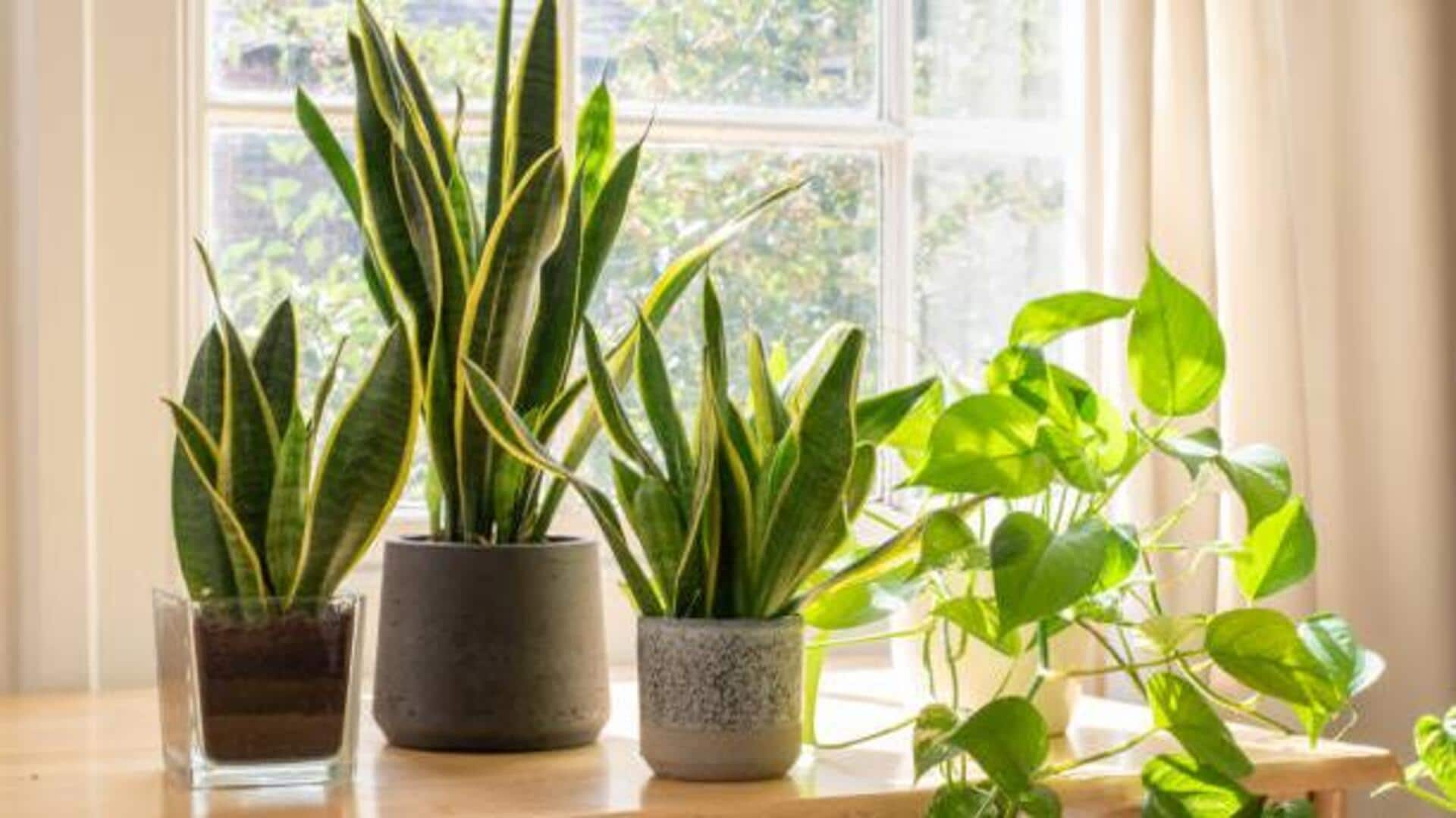
5 tips to grow a healthy snake plant
What's the story
Resilient and air-purifying, snake plants are an indoor gardener's favorite. However, just like any other plant, they need a certain degree of care to thrive. Knowing the ideal conditions and techniques can greatly improve their growth. Here are five easy tricks that'll help you boost the growth of your snake plant, effectively. Follow these tips, and keep your snake plant healthy and vibrant.
Light
Optimal light conditions
Snake plants thrive in indirect sunlight but also do well in low-light conditions. Ideally, you should place them near a window that gets filtered light. Avoid direct sunlight as it might scorch the leaves. If natural light is not enough, consider using artificial grow lights to meet their requirements. Providing adequate light will ensure photosynthesis and healthy growth.
Watering
Proper watering techniques
Overwatering is another common mistake with snake plants. They thrive in dry conditions and need watering only when the soil is completely dry. In winter months, you can reduce the watering frequency as the plant's growth slows down. Always use well-draining soil to avoid waterlogging, which may lead to root rot.
Temperature
Ideal temperature range
Snake plants thrive in temperatures ranging from 15 degrees Celsius to 30 degrees Celsius (59 degrees Fahrenheit to 86 degrees Fahrenheit). They are sensitive to cold drafts or sudden temperature changes, as it may stress out the plant or even cause damage. Keeping the environment stable within this range will promote healthy development.
Fertilization
Fertilization strategy
In order to provide your snake plant with the right amount of nutrients, fertilize it once every two months during the warmer months of spring and summer. A balanced houseplant fertilizer would be ideal for this purpose. Do not fertilize during the colder months of fall and winter, as the plant's growth rate drops. This way, you meet the nutritional needs of your snake plant without overwhelming it with excess nutrients.
Repotting
Repotting when necessary
Repotting should be done every two to three years, or when roots become crowded in their current pot. For optimal root expansion without the issue of water retention that could harm your plant's health, choose a pot slightly bigger than the previous one with good drainage holes at its base.